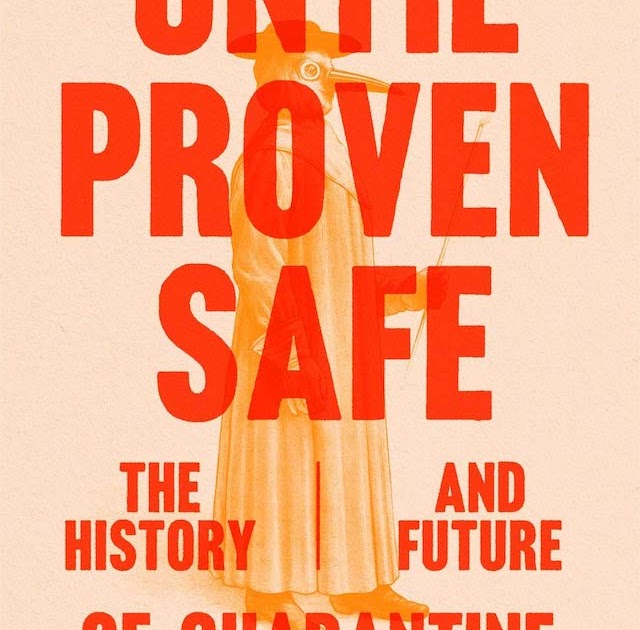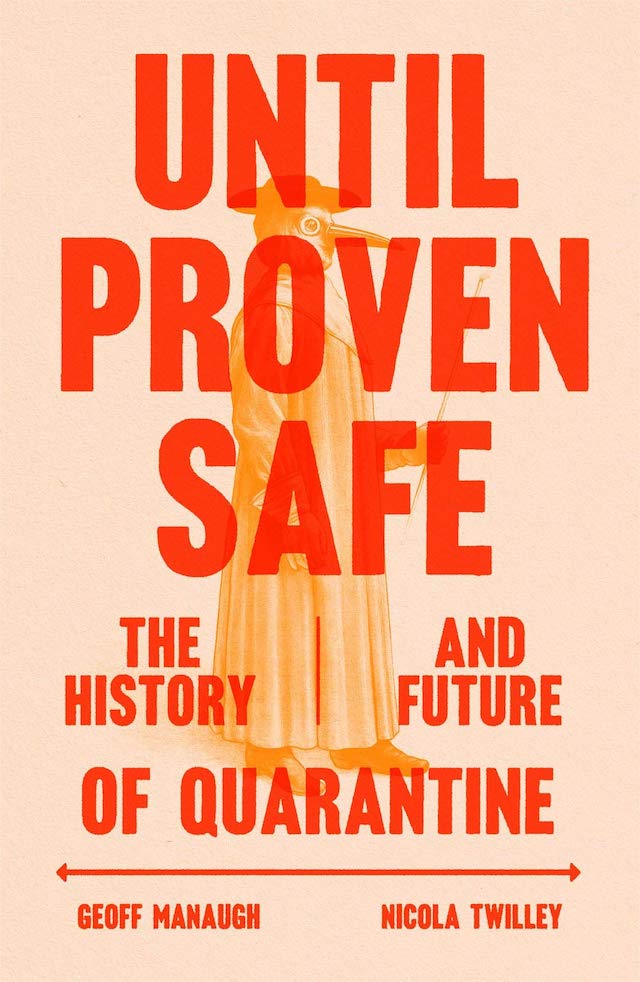Until Proven Safe
Until Proven Safe: The History and Future of Quarantineby Geoff Manaugh and Nicola TwilleyMCD × FSG, July 2021Hardcover | 5-3/4 x 8-1/2 inches | 416 pages | English | ISBN: 9780374126582 | $28.00PUBLISHER'S DESCRIPTION:Quarantine is our most powerful response to uncertainty: it means waiting to see if something hidden inside us will be revealed. It is also one of our most dangerous, operating through an assumption of guilt. In quarantine, we are considered infectious until proven safe.Until Proven Safe tracks the history and future of quarantine around the globe, chasing the story of emergency isolation through time and space—from the crumbling lazarettos of the Mediterranean, built to contain the Black Death, to an experimental Ebola unit in London, and from the hallways of the CDC to closed-door simulations where pharmaceutical execs and epidemiologists prepare for the outbreak of a novel coronavirus.But the story of quarantine ranges far beyond the history of medical isolation. In Until Proven Safe, the authors tour a nuclear-waste isolation facility beneath the New Mexican desert, see plants stricken with a disease that threatens the world’s wheat supply, and meet NASA’s Planetary Protection Officer, tasked with saving Earth from extraterrestrial infections. They also introduce us to the corporate tech giants hoping to revolutionize quarantine through surveillance and algorithmic prediction. Geoff Manaugh and Nicola Twilley have been researching quarantine since long before the COVID-19 pandemic. With Until Proven Safe, they bring us a book as compelling as it is definitive, not only urgent reading for social-distanced times but also an up-to-the-minute investigation of the interplay of forces–––biological, political, technological––that shape our modern world. The result is part travelogue, part intellectual history, an exhaustively researched trip that could not be more urgent or timely—and a book as compelling as it is definitive.Geoff Manaugh is the founder of BLDGBLOG, one of the most popular architecture sites on the Web. Nicola Twilley is co-host of the award-winning podcast Gastropod, which looks at food through the lens of history and science, and an award-winning contributor to The New Yorker. She lives in Los Angeles.REFERRAL LINKS: REVIEW:Back in November, architecture and design critic Edwin Heathcote rounded up the "Best books of 2021: Architecture and design" at the Financial Times, putting Geoff Manaugh and Nicola Twilley's book about quarantine alongside books about life on outer space, architect Sigurd Lewerentz, neoliberalism in architecture, and London pubs. Overall, what struck me about the list was the way the majority of the titles appeared to skirt architecture and design, with the monograph on Lewerentz and Douglas Spencer's Critique of Architecture firmly within the bounds of architecture but the other three books more on the field's margins. I don't see a problem with this, per se, but I do find the list encapsulating how numerous authors today view architecture and design well beyond the bounds of disciplines; humanity's impact on the built environment — both terrestrial and beyond — is what's considered to be architectural, not necessarily the work produced by architects.Even though Until Proven Safe covers aspects of quarantine — a subject now familiar to billions given COVID-19 — that are scientific, technological, historical, and political, as well as spatial, contemporary architecture does enter the picture, in the form of the National Bio and Agro-Defense Facility (NBAF) in Manhattan, Kansas. The new federal facility is located on the campus of Kansas State University, which happens to be my alma mater, though it is at a bit of a remove from the main campus that I traversed in architecture school decades ago. This distance (about a mile and a half) makes some sense, given that the NBAF was created to meet Biosafety Level 4, the highest level of containment for pathogens. As Manaugh and Twilley quote the CDC: BSL-4 microbes are "dangerous and exotic, posing a high risk of aerosol-transmitted infections." Ebola is one such pathogen — not something students want to be near on any regular basis.Manaugh and Twilley, carrying out most of their research and travels for the book before COVID-19 entered the global picture, traveled to the "Little Apple" (yes, Manhattan, KS calls itself that) and spoke with Ron Trewyn, a former cancer researcher responsible for bringing the BSL-4 lab to KSU, and Eugene Cole, an architect who spent fifteen years working at the Department of Homeland Security as NBAF Program Technical Director. The authors did not speak with (or did not quote, at least) any architects at Perkins & Will or Flad Architects, the firms that collaborated on the project, which is documented in renderings on their respective websites but appears to be done, if not totally in use, per the photo (below) on the NBAF page on the USDA website. I'm not surprised by this omiss

by Geoff Manaugh and Nicola Twilley
MCD × FSG, July 2021
Hardcover | 5-3/4 x 8-1/2 inches | 416 pages | English | ISBN: 9780374126582 | $28.00
PUBLISHER'S DESCRIPTION:
REFERRAL LINKS:
 |
| National Bio and Agro-Defense Facility (Photo via usda.gov/nbaf) |
FOR FURTHER READING:
- The BLDGBLOG Book, by Geoff Manaugh, published by Chronicle Books, 2009.
- Expelling the Plague: The Health Office and the Implementation of Quarantine in Dubrovnik, 1377-1533, by Zlata Blažina Tomic and Vesna Blažina, published by McGill-Queen's University Press, 2015.
- The Great Indoors: The Surprising Science of How Buildings Shape Our Behavior, Health, and Happiness, by Emily Anthes, published by Picador, 2021.
- Landscape Futures: Instruments, Devices and Architectural Inventions, edited by Geoff Manaugh, published by Actar, 2013
- Plague Hospitals: Public Health for the City in Early Modern Venice, by Jane L. Stevens Crawshaw, published by Routledge, 2012.
- When Biospheres Collide: A History of NASA's Planetary Protection Programs, by Michael Meltzer, 2011





